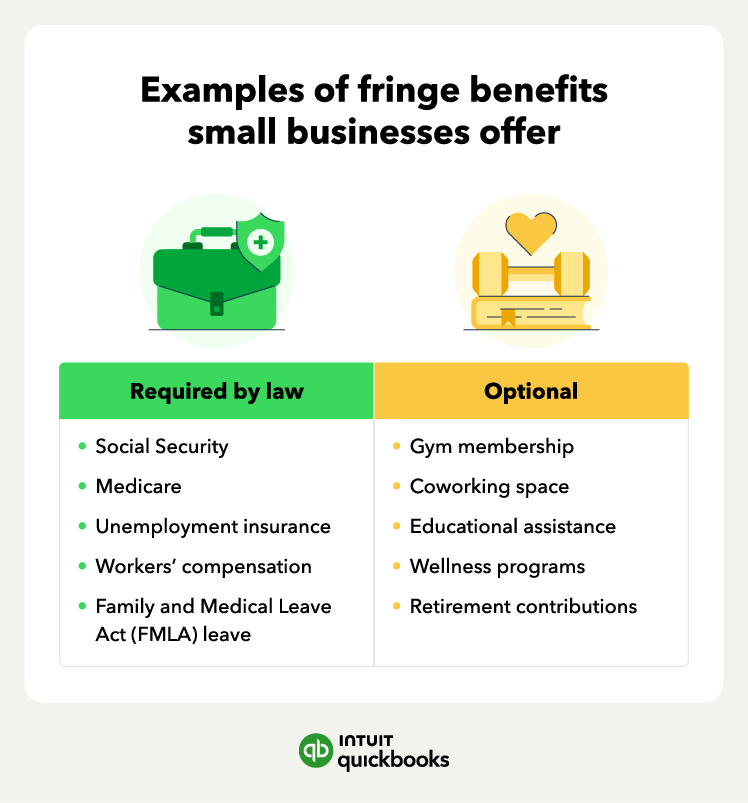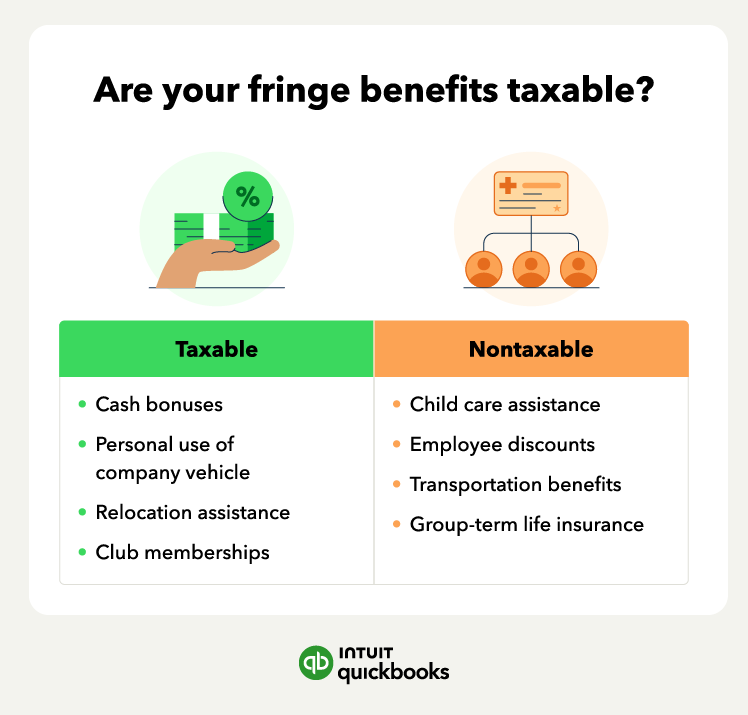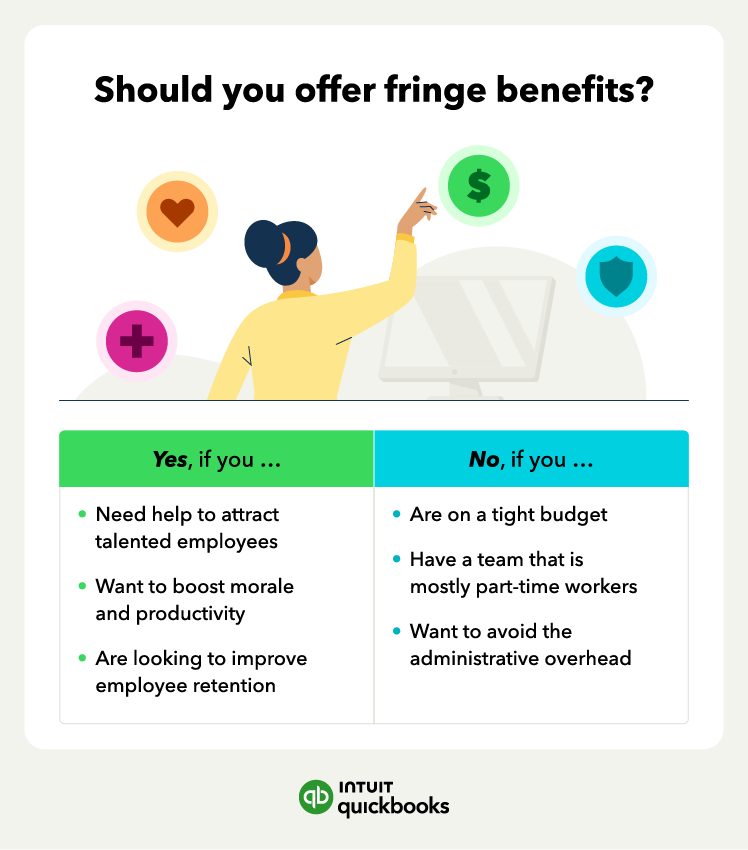Taxable fringe benefits
Taxable fringe benefits are included in the employee's gross income and are subject to federal income tax, Social Security, Medicare, and FUTA taxes. Taxable fringe benefits must be reported as imputed income, meaning they’re treated as compensation for tax purposes—even if no cash changes hands.
Examples of taxable fringe benefits include:
- Bonuses like cash rewards given to employees for performance or holidays
- Employer-provided vehicles for personal use
- Gym or athletic club memberships
- Personal travel expenses paid by the employer
- Group-term life insurance above $50,000
Nontaxable fringe benefits
Nontaxable fringe benefits are excluded from the employee's gross income and are not subject to federal income tax withholding.
Examples of nontaxable fringe benefits include:
- Employer-provided spending accounts like flexible spending accounts (FSAs)
- Transportation benefits like public transportation or parking
- Child care assistance over $5,000
- Employee discounts on company products or services
- Small, infrequent benefits like holiday or employee appreciation gifts or occasional meals
Note that the value of taxable fringe benefits must be included in Boxes 1, 3, and 5 of Form W-2 and on line 3 of Form 940.















 Tailor your benefits package to the specific needs and desires of your workforce—and regularly survey employees for feedback.
Tailor your benefits package to the specific needs and desires of your workforce—and regularly survey employees for feedback.
 If you're new to offering fringe benefits, start with the basics, such as health insurance, paid time off, and a simple retirement plan.
If you're new to offering fringe benefits, start with the basics, such as health insurance, paid time off, and a simple retirement plan.


